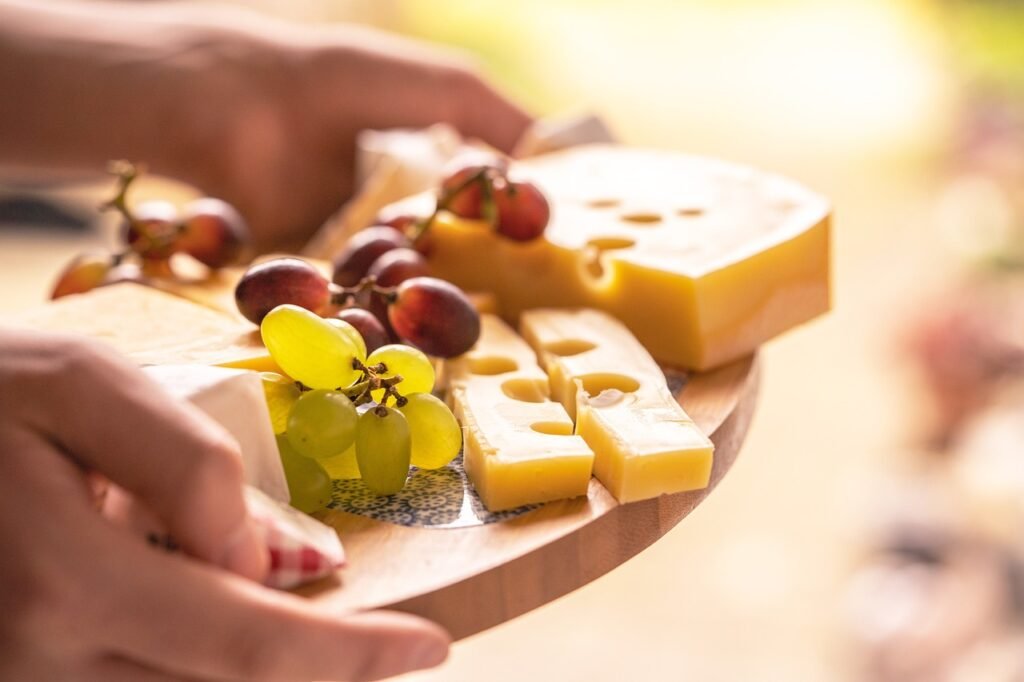Table of Contents
Introduction
Buy This Premium Website for Only $899 !
Acquire a high-authority website complete with content and a premium domain name.
Contact Us Today: Email: info@cleardesign.ch
Switzerland, known for its stunning landscapes, precision watches, and delicious chocolates, is also famous for its exceptional cheese. Swiss cheese has gained worldwide recognition, with fondue being one of its most renowned culinary exports. However, there’s a lot more to Swiss cheese than just fondue. In this article, we’ll dive deeper into the world of Swiss cheese, exploring its rich history, diverse varieties, and unique characteristics. Get ready for a flavorful journey as we go beyond fondue and discover the fascinating world of Swiss cheese varieties.
The Rich History of Swiss Cheese
Swiss cheese has a long and storied history that dates back centuries. The art of cheese-making in Switzerland can be traced back to the Roman era when dairy farming became a prominent practice in the region. Over time, Swiss cheese-making techniques evolved and became more sophisticated, resulting in the creation of numerous unique cheese varieties.
Emmental: The King of Swiss Cheeses
Emmental cheese stands tall as one of the most iconic Swiss cheese varieties. Its distinctive characteristics include its large, walnut-sized holes (known as “eyes”) and a rich, nutty flavor. Emmental cheese is often used in fondue and makes for a delightful addition to sandwiches and cheese platters. Fun fact: Emmental cheese is also the cheese used in the popular cartoon depiction of Swiss cheese!
Gruyère: A Swiss Classic
Gruyère cheese is another beloved Swiss cheese variety that has gained international acclaim. Named after the town of Gruyères in Switzerland, this cheese boasts a creamy texture and a complex flavor profile with fruity and nutty undertones. Gruyère cheese is a staple in traditional Swiss dishes like raclette and pairs beautifully with a glass of Swiss white wine.
Raclette: Meltingly Delicious
Raclette cheese is a semi-hard cheese that is often melted and scraped onto a plate of steaming potatoes, pickles, and cured meats. The name “raclette” comes from the French word “racler,” which means “to scrape.” This cheese is perfect for cozy gatherings and provides a warm and gooey indulgence that is hard to resist.
Appenzeller: A Flavorful Delight
Appenzeller cheese is known for its full-bodied flavor and spicy, tangy notes. Made in the Appenzell region of Switzerland, this cheese is crafted using a secret blend of herbs, spices, and a traditional brine wash. The result is a unique cheese with a robust taste that adds depth to any dish.
Tête de Moine: A Work of Art
Tête de Moine cheese, also known as “monk’s head cheese,” is not only delicious but also visually stunning. This cylindrical cheese is prepared in thin shavings using a special apparatus called a girolle. With its delicate texture and nutty flavor, Tête de Moine is a true masterpiece that elevates any cheese platter.
Vacherin: Creamy Bliss
Vacherin cheese is a creamy and aromatic delight. This soft cheese is made from cow’s milk and has a melt-in-your-mouth texture. Vacherin is often enjoyed with a spoon, as its velvety richness is best experienced by savoring it on its own. It can also be baked and served warm for an extra indulgent treat.
Swiss Cheese FAQs
FAQ 1: Is Swiss cheese only produced in Switzerland?
No, Swiss cheese is produced in various countries worldwide. However, true Swiss cheese, made using traditional Swiss methods and recipes, is still primarily produced in Switzerland.
FAQ 2: Can lactose-intolerant individuals consume
Swiss cheese?
Yes, many Swiss cheese varieties have minimal lactose content due to the fermentation process. People with lactose intolerance often find that they can tolerate and enjoy Swiss cheese without any issues.
FAQ 3: What is the best way to store Swiss cheese?
To ensure the longevity and quality of Swiss cheese, it is recommended to store it in the refrigerator. Wrap it tightly in wax paper or plastic wrap to prevent moisture loss and protect it from absorbing other odors.
FAQ 4: Are all Swiss cheeses suitable for melting?
While most Swiss cheeses have excellent melting properties, some varieties are better suited for melting than others. Emmental and Gruyère are popular choices for melting due to their smooth texture and flavor profiles.
FAQ 5: Can Swiss cheese be used in desserts?
Yes, Swiss cheese can be incorporated into sweet dishes and desserts. For example, Tête de Moine can be paired with fresh fruits, and soft cheeses like Vacherin can be used in cheesecakes or as a topping for pastries.
FAQ 6: Are there any vegan Swiss cheese alternatives?
Yes, there are several vegan Swiss cheese alternatives available in the market. These alternatives are typically made from plant-based ingredients such as nuts, soy, or coconut and aim to replicate the taste and texture of traditional Swiss cheese.
Conclusion
Beyond fondue, the world of Swiss cheese is a treasure trove of flavors, textures, and traditions. From the iconic Emmental and Gruyère to the lesser-known gems like Raclette and Tête de Moine, Swiss cheese offers a diverse range of options for cheese enthusiasts around the globe. Whether you’re melting it, shaving it, or savoring it on its own, Swiss cheese is sure to delight your taste buds and leave you craving more. So, go beyond fondue and embark on a culinary adventure as you explore the wonderful Swiss cheese varieties that this beautiful country has to offer.
